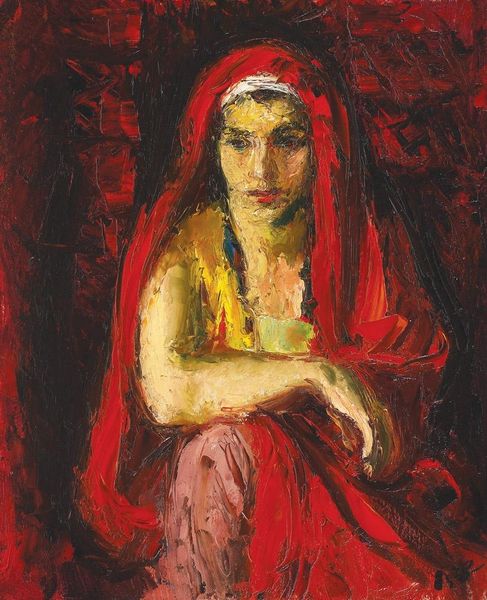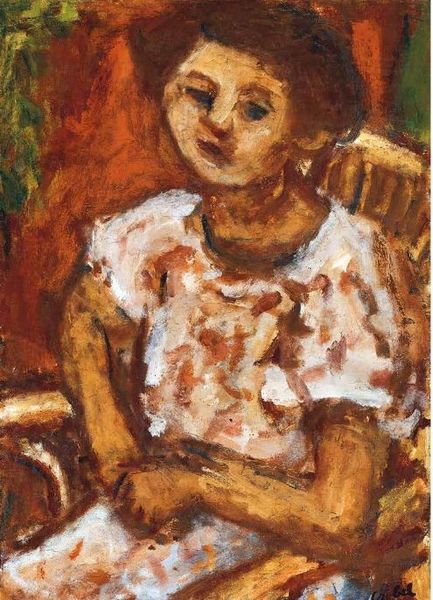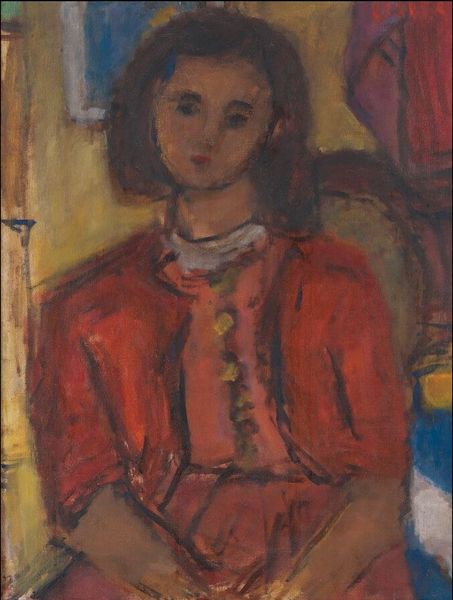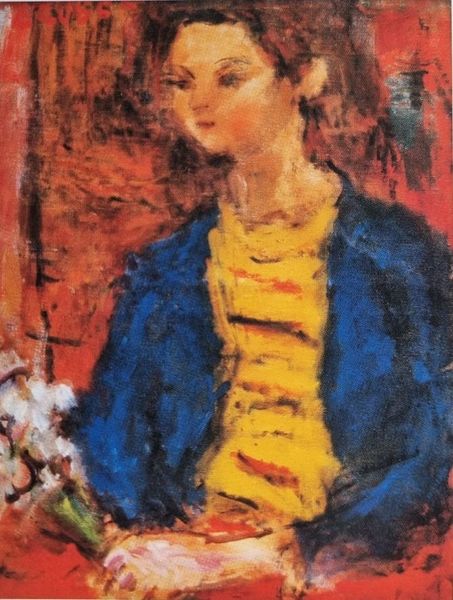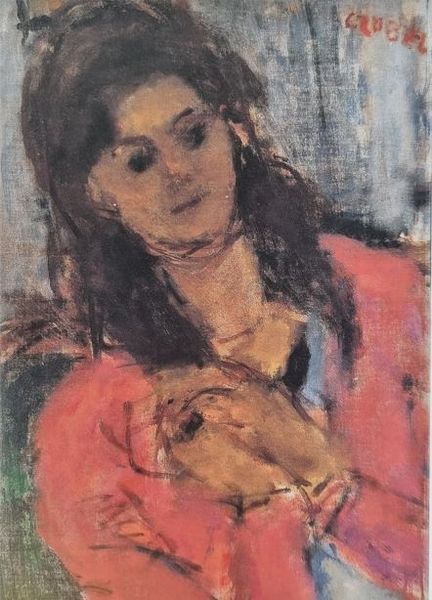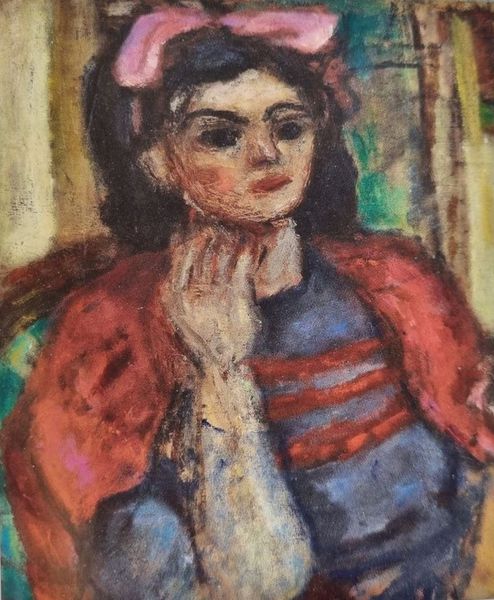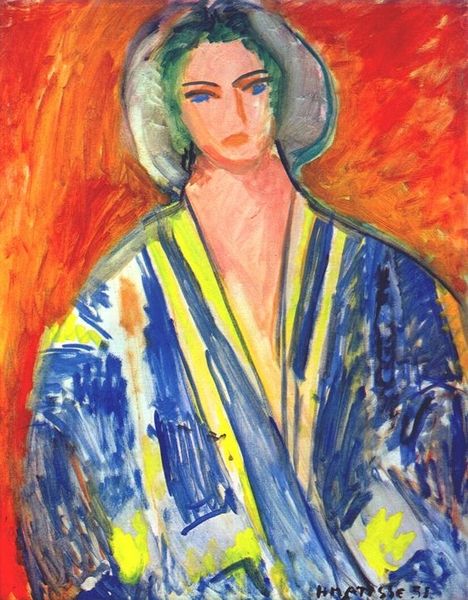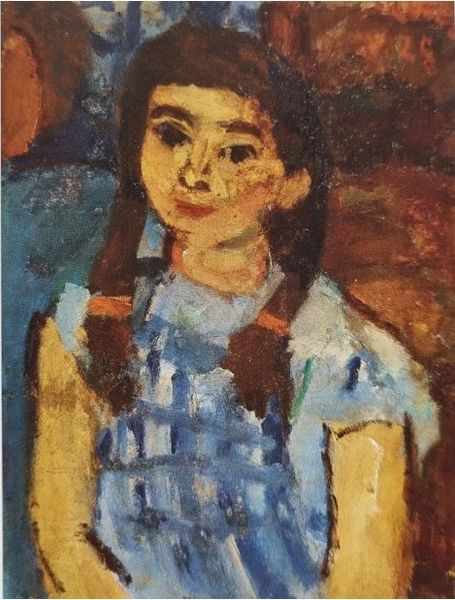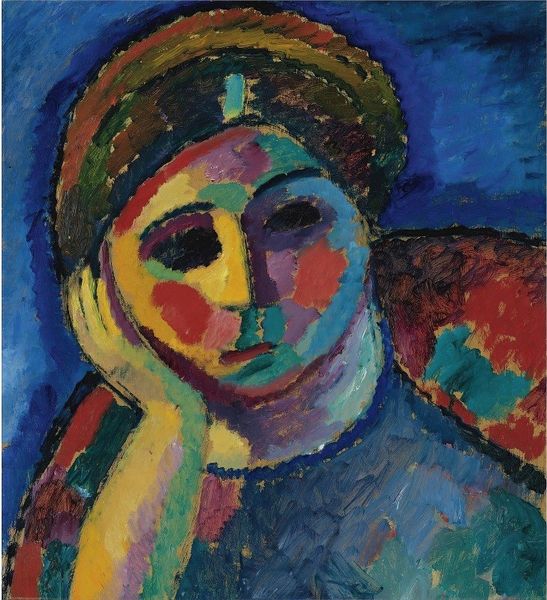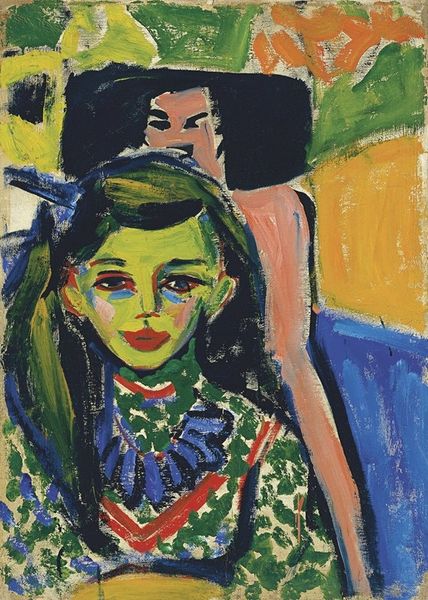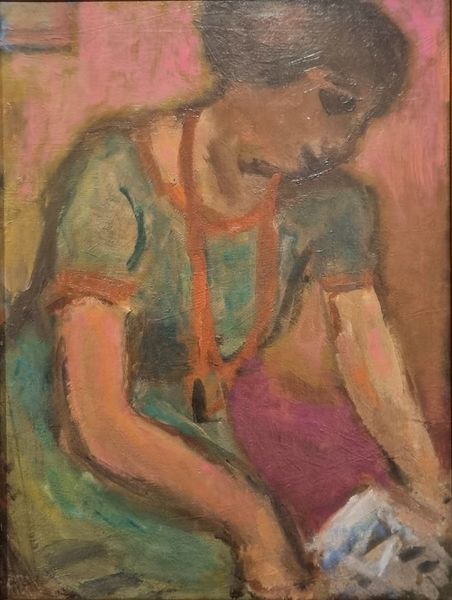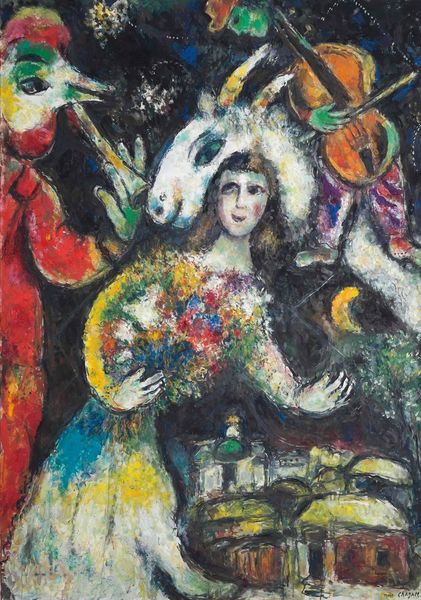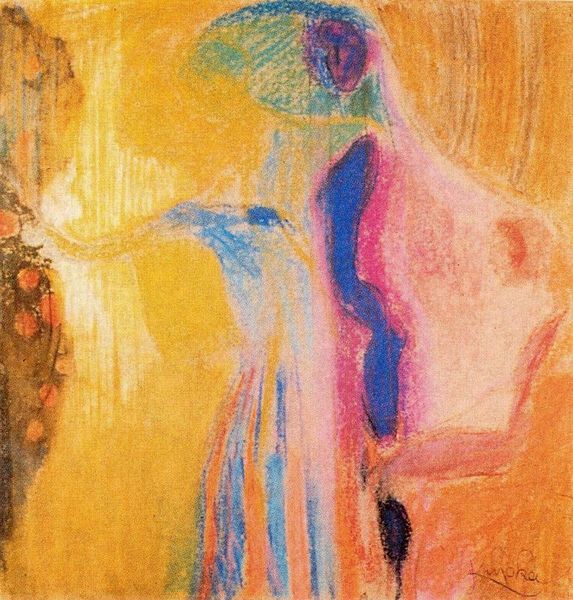
painting, oil-paint, impasto
#
portrait
#
fauvism
#
fauvism
#
painting
#
oil-paint
#
figuration
#
oil painting
#
impasto
Copyright: Bela Czobel,Fair Use
Painted in 1975 by Béla Czóbel, this is ‘Czóbel Béla Sárga Kedős Klári,’ an oil on canvas. See how Klári is draped in bright colors. Her headscarf, the "kedős," immediately strikes us. Headscarves have a rich history. In many cultures, they symbolize modesty and piety, particularly for women. In religious art, consider the Virgin Mary, often depicted veiled, representing purity and humility. Yet, the kedős is also about identity and cultural expression. Its colors and patterns tell a story of origin and belonging. The yellow Czóbel uses here suggests light and perhaps joy, contrasting with the more somber associations of veils in other contexts. The act of veiling can evoke a range of emotions, from concealment to revelation. It’s a visual language passed down through generations, reappearing in fashion, religious iconography, and even political statements. Over time, its meanings have shifted, evolving from signs of status to symbols of resistance. This cyclical progression engages us on a subconscious level. It touches upon our collective memory, reminding us that images are never static but constantly transforming through history.
Comments
No comments
Be the first to comment and join the conversation on the ultimate creative platform.
